 Register on the forum now to remove ALL ads + popups + get access to tons of hidden content for members only!
Register on the forum now to remove ALL ads + popups + get access to tons of hidden content for members only!
|
||||||||
 Best Porn Sites Best Porn Sites
|
Live Sex | Register | FAQ | Members List | Calendar | Mark Forums Read |
| Vintage Elegance & Beauty Female beauty from bygone days ~ Pre 1945 elegance. |
 |
|
|
Thread Tools | Display Modes |
|
|
#21 |
|
Vintage Member
Join Date: Jan 2008
Location: Kyiv
Posts: 578
Thanks: 44
Thanked 17,705 Times in 579 Posts
           |
New York: Alexander, Lucas, Mitchell, Pach, Shelton, Underwoods
Kenneth Alexander Time Period: 1920-1940 Location: 542 5th Ave, NYC, 6885 Hollywood Blvd, CA “Early in his career (from 1921 to 1927) he practiced female portraiture exclusively. Sitters were formally seated and display gravity as well as charm. He avoided any element of risque sex appeal and so provided an alternative to the tendency to eroticize women sitters found in the work of John De Mirjian, Alfred Cheney Johnston, and Georges DeBarron. When his movie work began dominating his trade, he diversified, shooting stills and male portraits. He became known in Hollywood for shooting scene shots showing production numbers in which a star was contrasted with a chorus or a crowd.” © David S. Shields George W. Lucas Time Period: 1905-1942 Location: 17 West 48th Street, Manhattan “Devised the flare method of photographic illumination. Did production photography?photographs of stage action taken usually dead center from the 10thow of the orchestra after the dress rehearsal Lucas photographed the best of the White Studio stage portraits. His earliest work 1905-1910 sometimes suffers from a rather schematic arrangement caused by slow shutter speeds. By the 1910s, faster exposures enable a looser, more spontaneous looking stage picture. He also took to putting the camera on stage and shooting close up dramatic scenes, particularly in drawing room dramas. When leading his own studio from 1936-1942, he availed himself of hand-held cameras with high speed film and rapid shutters, so the pictures reflect the dynamism of stage action. He did not do portrait work.” © David S. Shields Herbert Mitchell Time Period: 1928-1940 Location: 1500 Broadway, Manhattan NY, 36 Arden Street “Master of floating heads and the waist-up portrait shot with sitters posed at an angle 25-50 degrees off center. By frequently employing light toned patterned or plain backgrounds, he endeared himself to periodical photo editors for whom the dark backgrounds favored by art photographs presented reproduction difficulties. He never used props. He preferred shooting personalities in their own clothes rather than costumes. He had a talent for suggesting that the sitter was absorbed in thought or amused at his or her surroundings. He signed his best pieces in white ink. In the 1930s he offered the following observations about facial features and their contribution to attractiveness. 'A large mouth is more alluring than a perfectly-shaped small one for it denotes a gay, magnanimous character. Eyes are most important. Large, soulful ones or narrow, deep-set eyes each have a very definite attraction . . . . you cannot make up a certain set of rules. Little irregularities make a face more interesting.'” © David S. Shields Pach Brothers Studio Time Period: 1867-1980s Location: 935 Broadway, 570 Fifth Avenue, NYC & 17 branches “Diversified photographic service with emphasis on portraiture of the professional classes. Because of the Studios initial backing by Gen. U. S. Grant, it became the official studio of West Point. Generations of U. S. Army officers had their promotion pictures taken by Gustavus or Gotthelf Pach. In the final decades of the 19th century, the firm developed a national reputation for college portraiture. It opened branches in the Ivy League towns. Gustavus Pach invented dry plate methods of printing and the 'flashlight' method of illuminating scenes, using magnesium powder, alcohol, & a blow torch. It would be the prevalent method of lighting theatrical production shots until the 1905. Theatrical photography was a subsidiary element of a wider practice of photography, with portraiture prevailing over production shots. During the 1910s and 1920s under second generation director Alfred Pach, the studio excelled in large format images of performers in contemporary clothing.” © David S. Shields Philip H Shelton Time Period: 1920s (?) Location: New York Underwood & Underwood Time Period: 1888-1930s Location: Multiple Branch Offices “Diversified agency that came to power popularizing the steroegraph and by doing pioneering work in photojournalism. In the 1910s expanded its coverage of the world of entertainment with an emphasis on celebrity portraiture. Made an early specialty of candid shots of stage stars, usually seen at home. Bert Underwood did the earliest important formal portrait studies of stage personalities. Several uncredited lensmen shot the entertainment material in the 1920s.” © David S. Shields Alma Rubens, Betty Blythe, Dorothy Gish, Gilda Gray, Hope Hampton, Irene Bordoni, Irene Rich, Jean Harlow, Joan Crawford, Marchesa Di Calvatone, Mary Astor, Mildred Anders, Myrtle Stedman, Nina Foch, Norma Talmadge, Norma Talmadge, Theda Bara, Valeska Suratt...  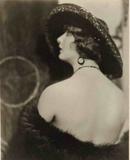           [ mod edit - dead link(s) removed] Last edited by Wendigo; April 28th, 2016 at 09:58 PM.. Reason: removed dead links |
|
|

|
| The Following 22 Users Say Thank You to mrcheese For This Useful Post: |
|
|
#22 |
|
Vintage Member
Join Date: Jan 2008
Location: Kyiv
Posts: 578
Thanks: 44
Thanked 17,705 Times in 579 Posts
           |
Haz, Hiller, Leonetti, Rabinovitch, Schwarz, Vayana
Nicholas Haz Time Period: 1924-1950 Location: Manhattan, with occasional West Coast sojourns “While he photographed a vast range of subjects, his invariable concern in photography was composition. He was interested in depth of field, assymetry, and visual echo effects. He tended toward straight photography, thinking the art of the camera was largely a work of setting the frame for the picture. His prints are not overly worked, and he was a minimal retourcher.” © David S. Shields http://broadway.cas.sc.edu/index.php...ographer&id=69 Lejaren A. Hiller Time Period: 1920-1950 (?) Location: New York “Lejaren A. Hiller (1880 - 1969) was a remarkable photographer known particularly for theatrically staged tableaus. Lejaren A. Hiller Sr. was born in Milwaukee, Wisconsin and studied photography in various locations before embarking on his long photographic career. Often Lejaren would spend all of his effort arranging the set and actors in his tableau, with an assistant actually making the final negative. Thusly, Lejaren is often construed as more of a "director" than "photographer." Lejaren A. Hiller Sr. is often remembered for his famous quote about photographic technique: “If a man wants to strangle his wife and throw her in the kitchen sink, let him do it any way he wants to. If he's doing it awkwardly, or not the way I'd do it, all right -- it's a good job so long as he gets her into the sink, completely strangled.” Carlo Leonetti Time Period: 1918-1950 Location: 53 West 46th Street, New York City “Leonetti often muted tonalities. He shot unadorned almost abstract nudes, often posed with a mannerist breadth of gesture. His portraits have a purity and lack of complication that is refreshing. His 1930s portraits often attempted a two-dimensional, graphic quality by reducing shadows to a minimum. He sought to depict the humanity of persons, and was among the most sympathetic of theatrical portraitists.” © David S. Shields http://broadway.cas.sc.edu/index.php...ographer&id=70 Ben Magid Rabinovitch Time Period: 1905-1940 Location: 142 West 57th, 40 W. 56th Street , NYC “Signing his work by his last name--'Rabinovitch'--this portraitist and still life photographer became a force in New York artist circles as a pedagogue and photographic taste-maker. In his earliest work, pre 1927, Rabinovitch cultivated a pictorialist density and richness of texture, yet he possessed an aesthetic clarity of line and an instinct for the integral disposition of various pictorial elements. Rabinovitch was particularly adamant in his determination not to retouch 'anything above the shoulders' in a portrait at a time when wrinkle erasers and 'eye doctors' dominated the dark rooms; yet he would manipulate everything in other portion of the pictorial field for expressive purposes. He did theatrical work, but his interest in human appearance was broad and he would approach interesting looking people on the street in order to portray them. In the later 1920s, he became increasingly interested in objective modernism and the sharp edge/clear focus aesthetic emerging in art photography. Yet this clarity was added to what was primarily an experimental outlook to the medium. Like Man Ray, he would solarize, or abstract pictorial elements. His still lifes from the 1930s have a spare monumental simplicity admired by lovers of modernist abstraction.” © David S. Shields http://broadway.cas.sc.edu/index.php...ographer&id=43 Ira D. Schwarz Time Period: 1910-1940 Location: Brooklyn, NY “Began as a pictorialist art photographer, showing prints in the 1912 meeting of the American Photographer’s Association in NY. Fascinated with shade and known for the plummy blacks in his prints. Broke into the magazine market in 1924. Attempted to compete with Tommy Vandamm as a production photographer of the stage and enjoyed some success in the 1930s shooting a number of serious, psycholgoical dramas. Did portrait work as well. Was considered a photographic psychologist by his colleagues, intent on capturing the mentality of his sitter.” © David S. Shields http://broadway.cas.sc.edu/index.php...ographer&id=44 Nino (Nunzio) Vayana Time Period: 1910 (?) Location: New York Avonne Taylor, Claire Martin, Florence Huntley, Gilda Gray, Kathleen Burke, Lucille Watson, Mary Phillips, Nita Naldi... 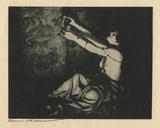   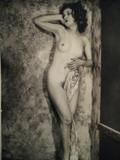 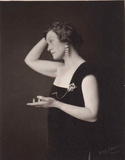      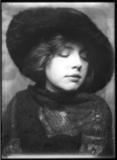      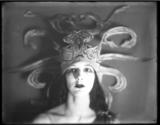      [ mod edit - dead link(s) removed] Last edited by Wendigo; April 28th, 2016 at 10:07 PM.. Reason: removed dead links |
|
|

|
| The Following 33 Users Say Thank You to mrcheese For This Useful Post: | bigbellyboy73, bluemax0, bustero, deepsepia, excepteuropa1, gubaman52, jakubsten, jawbone, joe gerkin, johnbear, jomama, jron, kego29, Kul Kat, lordoctorr, Meini Again, napo, over65, Paul-1485, pbcd10610, phap, Pipemaster, Sam Spade, signal, skullylab, Spargel, Star_Voyager, teaktop, the pope, The Wolf Man, thyde, tsunamiSD, zimbim |
|
|
#23 |
|
Vintage Member
Join Date: Jan 2008
Location: Kyiv
Posts: 578
Thanks: 44
Thanked 17,705 Times in 579 Posts
           |
West Coast: Fred Hartsook
Time Period: 1910s-1920s (?) Location: West Coast “one of the earliest west-coast photographic studios. When it opened an L.A. office Melbourne Spurr handled many of the early shoots.” © David Shields “was born in 1876, in Indiana, the son of a professional photographer and the grandson of an early daguerrotypist. He established himself as a leading professional photographer while still in his early twenties, specializing in portraits of celebrities. Though the portraits we've seen are stamped "Hartsook Photo S.F.-L.A.," he had studios all over the West Coast, from San Diego to Seattle. In 1919, he divorced his first wife and married Bess Hesby, who'd been crowned Miss California at the San Francisco Panama-Pacific Exposition of 1915. The Hartsook movie star portraits I've seen are usually from the mid- to late-1910s (Mabel Normand, Mary Pickford, etc.). I don't know why he wasn't doing so many in the 1920s, but he was branching out into other businesses by then. He speculated in a large parcel of San Fernando Valley real estate (there's a Hartsook Street and a Hesby Street today in Sherman Oaks), and he owned a lot of grazing land up in Kern County. A 1925 newspaper article refers to him as "owner of 26 art studios and wealthy dairy livestock financier." Hartsook had been living in the Hollywood area, but he purchased a second home in the remote redwood country of Northern California's Humboldt County. Seeing a business opportunity, he built a resort there in 1925, the Hartsook Inn. The Inn sat on over 30 acres of pristine redwood forest, and became the center of a small community which soon included stables, a gas station and a post office. The Inn seems to have been successful, but it burned down in 1927. He began rebuilding immediately, but other troubles were developing in the Hartsook empire, which I haven't been able to pin down. A Humboldt County history book simply says, "Due to a series of misfortunes there was only one photography studio left in Southern California at the time of his death [1930], and Hartsook devoted much of his time to this." Bess kept the Inn going, but it seems to have become a victim of the 1937-38 recession, and was foreclosed upon in October 1938. It remained operating, but on December 13 of that year a fire broke out in the kitchen, and most of the Inn burned to the ground once again. New owners came along in 1941, and the Inn was completely reconstructed by 1948, only to burn down once more in 1973. Again the Inn was rebuilt, and continued to operate under a succession of owners. Eventually, the newest owners of the property planned to raze the then-kitschy Inn and sell logging rights to the 37 acres of redwoods. Happily, they finally sold the whole thing to the Save-the- Redwoods League and the trees were saved. I'd love to know whatever happened to all of Hartsook's negatives, but they seem to be long gone. Bess Hesby Hartsook passed away in 1976. There are Hartsook descendents, though. A few weeks before Bess's death, one granddaughter made headlines around the world by tapdancing across the Golden Gate Bridge. She did it wearing a backpack, and inside the backpack was the carefully-folded American flag that Mrs. Thomas Edison had presented to Bess at the Panama-Pacific Exposition of 1915.” © Christopher Snowden “Fred Hartsook was born on 26 October 1876 in Marion, Indiana to John Hartsook and Abbie, ne'e Gorham. He was born into a family of photographers and studio owners, his father and two uncles were all successful in the business and his grandfather had been the first photographer to open a studio in Virginia. Later he opened two studios, in Santa Ana and Santa Barbara, but eventually closed them in order to open a studio on 636 South Broadway in Los Angeles.[1] Hartsook's success as a photographer and studio owner allowed him to expand into other cities along the Pacific Coast, including San Francisco and Oakland. In 1921, McGroarty gives the number of studios as 20 and describes it as the "largest photographic business in the world"[1]. Bill Robertson, director of the Los Angeles Bureau of Street Services, cited by KPCC in 2009, mentions 30 studios.[2] Even if the bulk of the business came from everyday studio portraiture, Hartsook gained prominence through his celebrity clients, which included silent era Hollywood actors such as Mary Pickford, Lillian Gish, and Carlyle Blackwell, other celebrities such as pilot Charles Lindbergh, entrepreneur Henry Ford, and opera singer Geraldine Farrar, and politicians like House leaders Champ Clark and Joseph Gurney Cannon.[3] McGroarty describes a 40-minute sitting with President Woodrow Wilson in September 1919 as "the first formal sitting since Mr. Wilson became president."[1] On 30 September 1930, Fred Hartsook died of a heart attack in Burbank, California, shortly before his 54th birthday.” © http://en.wikipedia.org/wiki/Fred_Hartsook Alice Calhoun, Ann Little, Joan Crawford, Lillian Gish, Lilyan Tashman, Mabel Normand, Marjorie Daw, Mary Pickford, Mildred Harris, Norma Talmadge, Pauline Frederick, Ruth Chatterton, Ruth Renick, Ruth Roland, Viola Dana...      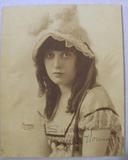    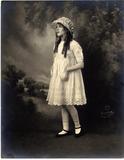  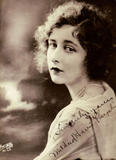  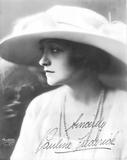 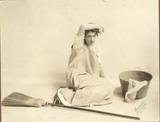    Last edited by mrcheese; June 23rd, 2010 at 11:22 AM.. |
|
|

|
| The Following 20 Users Say Thank You to mrcheese For This Useful Post: |
|
|
#24 |
|
Vintage Member
Join Date: Jan 2008
Location: Kyiv
Posts: 578
Thanks: 44
Thanked 17,705 Times in 579 Posts
           |
Apeda Studio
Alexander W. Dreyfoos and Henry Obstfield Time Period: 1906-1990 Location: 33 W. 34th street, 102-104 W. 38th St; 212-216 W. 48th St; 525 W. 52nd NYC “The several photographers who contracted for work with Apeda over the years were conversant in every contemporary portrait styles, often imitating signal features of the name photographers of the day. If there was any discernible ability characteristic of the company's photography, it was the ability to portray the whole body of the subject. While whole body portraiture was normal in sports and dance photography, it grew infrequent in 1920s theatrical portraiture, whole body shots being associated with production stills. Apeda photographers bucked the trend, producing whole body non-production portraiture after it went out fashion in Manhattan.” © David S. Shields http://broadway.cas.sc.edu/index.php...ographer&id=57 Alla Nazimova, Anita Stewart, Annabelle Whitford, Bessie Love, Corinne Griffith, Inez Courtney, Justine Johnstone, Lila Lee, Lillian Gish, Lucille Lee Stewart, Marion Davies, Naomi Glass, Norma Shearer, Ona Munson, Viola Dana, Vivian Martin...   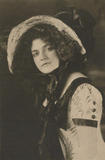          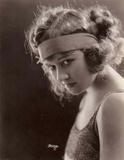   [ mod edit - dead link(s) removed] Last edited by Wendigo; April 29th, 2016 at 06:19 AM.. Reason: removed dead links |
|
|

|
|
|
#25 |
|
Vintage Member
Join Date: Jan 2008
Location: Kyiv
Posts: 578
Thanks: 44
Thanked 17,705 Times in 579 Posts
           |
LA: George Cannons, Evans
George F Cannons Time Period: 1920s-1930s (?) Location: Los Angeles (?) "did most of Sennett's stills from at least as early 1923 according to Steve Rydzewski." “A few photographers had tight professional relationships with directors such as George Cannons who worked primarily for Mack Sennett.” © David S. Shields Evans, LA Nelson Frazer Evans Fred Edgeworth Time Period: 1920 (?) Location: Los Angeles (?) Nelson Frazer Evans “a master of the headshot portrait, Evans also created the genre of cheesecake photography with his early seaside full body portraits of the Sennett Bathing Beauties.” © David S. Shields “The Film Daily 1928 Yearbook lists more than three dozen independent photographers working in Los Angeles and supporting the rapidly growing film industry. One name that does not appear on the list is Nelson Evans who was among Hollywood's first photographers. Kobal examined Evans's career in detail in his book Hollywood: The Years of Innocence. Recorded working by 1915, within a decade Evans had vanished; Kobal did not speculate on the reason but merely asked, "Who was he? What happened to him?" Evans left an extraordinary photographic legacy, recording Hollywood at work and at play, making portraits as well as photographing the ever changing city of Los Angeles. Pickford and Swanson were among his subjects as were the first cowboy stars Tom Mix and William S. Hart.” Fred Edgeworth for Nelson Evans "He was a still photographer in Hollywood from 1909 until sometime after 1921, when he went to work for Evans Studio. He worked for Laemmle (sp?) and several other directors but the work was too sporadic for a family man so he went to work for Evans." © Jeanne (opie_jeanne) Catalog of copyright entries, Library of Congress Copyright Office, 1919. K = 15 September 1918 E = 22 October 1918 Claire Anderson K 6, 19, 30 Rose Carter K 2, 12, 20, 27 Claire Anderson + Rose Carter K 9, 15, 22, 29 Harriet Hammond E 3, 4, 13, 15, 24 Harriet Hammond + Virginia Warwick E 6, 22 Harriet Hammond + Virginia Warwick + Phyllis Haver E 11, 29 Virginia Warwick + Phyllis Haver E 12 Phyllis Haver E 5, 8, 9, 16, 17, 19, 21, 23 Lillian Langston K 7, 23 Lillian Langston + Edith Roberts K 28 Edith Roberts K 11 Maude Wayne K 1 Marie Prevost E 1, 7 Myrtle Reeves K 3, 14 Virginia Warwick E 10, 14, 18, 20 Roxy McGowan + Mary Thurman E 28 Mary Thurman + Marie Prevost E 2 Virginia Warwick + Marie Prevost + Vera Steadman E 26 Alice Day, Andre Bailey, Dolores Del Rio, Iris Adrian, Madeline Hurlock, Marion McDonald, Mary Mayberry, Peggy Davis, Ruth Hiatt…   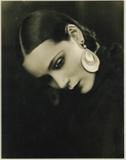     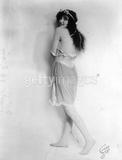  Alice Lake, Ann Forrest, Barbara La Marr, Bebe Daniels, Claire Anderson and Rose Carter, Colleen Moore, Constance Talmadge, Dorothy Dalton, Gloria Swanson, Grace Darmond, Helen Mae, Marie Prevost, Mary Miles Minter, Mary Pickford, Pauline Frederick... 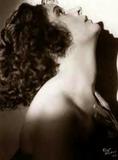    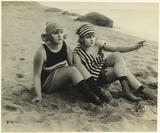 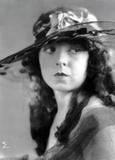 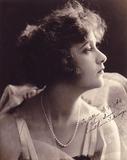    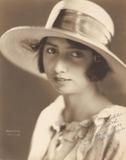   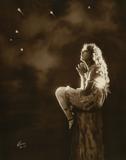   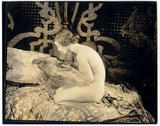 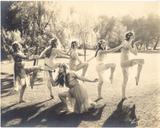 [ mod edit - dead link(s) removed] Last edited by Wendigo; April 29th, 2016 at 06:23 AM.. Reason: removed dead links |
|
|

|
| The Following 29 Users Say Thank You to mrcheese For This Useful Post: |
|
|
#26 |
|
Vintage Member
Join Date: Jan 2008
Location: Kyiv
Posts: 578
Thanks: 44
Thanked 17,705 Times in 579 Posts
           |
“Too many lovely models – so, he didn’t want to live”
The Miami News, 1 September 1929 “What a nightmare it was to go home from work always in dread of another scene. We never had any peace.” © Suicide note by James Wallace Pondelicek, 26 july 1929.     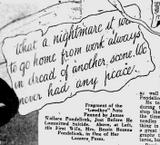   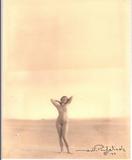 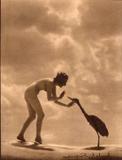    [ mod edit - dead link(s) removed] Last edited by Wendigo; April 29th, 2016 at 07:16 AM.. Reason: removed dead links |
|
|

|
| The Following 25 Users Say Thank You to mrcheese For This Useful Post: |
|
|
#27 |
|
Vintage Member
Join Date: Jan 2008
Location: Kyiv
Posts: 578
Thanks: 44
Thanked 17,705 Times in 579 Posts
           |
Stoltz studio
Sam Stoltz maybe Time Period: 1920s-1925 Location: Chicago Innovative artist, decorator and builder who lived and worked in Winter Park. He was known as the "world's greatest poultry painter." "Born in 1876, Sam Stoltz was destined to design some truly imaginative and unique homes in and around Orlando. He may have grown up on the family farm in Humbolt, Nebraska where his Pennsylvania Dutch parents had settled, but his architectural and decorative creations in Central Florida continue to be of great interest today. Stoltz left the family farm at an early age in order to study Commercial Art in Chicago. He returned home briefly, but later moved back to Chicago to embark on his career. Here, he worked at different advertising companies, many times in the position of art director. Eventually, he established his own art studio, where he produced original drawings, oil paintings, and portraits. That same year (1911) he also married a young woman who had been his favorite art model, Patti Jo Walker. Although Stoltz had no formal education or training in architecture, he had an understanding of construction and design. The first home that he designed was located in Winnetka, Illinois, and it was built for he and his wife. Their second home was located in Highland Park, Illinois, and it featured the characteristics that would come to recognized as the hallmarks of a Sam Stoltz design: cathedral ceilings, stucco, masonry, and the feature that would become his signature: a huge stone fireplace. It was here that Stoltz also began to incorporate landscape architecture in his designs. The couple moved to Central Florida in 1925, settling in Orlando. The first homes that he designed here were a style that he termed "Spanish Orlando". He also began to incorporate aspects of Florida's natural beauty into his creations; birds, fish, and other wildlife began to adorn these homes. Then, his interests were drawn to the community of Mount Plymouth, Florida. Here he created perhaps his best known homes, which he dubbed the "Plymouthonians". These homes are described as having a unique Tudor-style, and featured fireplaces, dramatic roofs and chimneys, fountains and waterfalls made from coquina rocks. His "Plymouthonian No. 2" is said to have surpassed any of previous creations! While probably best known for his residential designs, Stoltz also employed his artistic and decorative skills to enhance many local business interiors. He created installations, paintings and murals for locations including: Fidelity Title & Loan Company, the Angebilt Hotel, and the Orlando Chamber of Commerce. Most of these creations featured the flora and fauna of Florida, as well as the history of the state. In the late 1920s, Stoltz began accepting jobs in Winter Park. One of the homes that he designed is located at 868 Golfview Terrace. It was commissioned by Mr. Miles Dawson of New York, who requested a "Spanish-type" house. This home offers Stoltz's characteristic textured stucco, coquina-like stone trim, and a rock fountain. Another home that is attributed to Stoltz is located 843 Palmer Avenue. The exterior of this home features stones that have been inserted decoratively into the the stucco, arched doorways and a large fireplace. In the 1930s, Stoltz purchased several acres of land in Winter Park, which were located on the southern shore of Lake Maitland. They left their home in Orlando and moved into a cottage that was situated on one of the properties. A studio was later added onto the rear of the cottage, and it was here that he created oil paintings, murals, vases, lamps, glass and tile creations and other decorative pieces. He also continued to design the dramatic stone fireplaces for which he was so well known. As the years went by, the Stoltzs added more Winter Park properties to their holdings. Stoltz died at his Winter Park home on December 10th, 1952. He was 76 years of age."   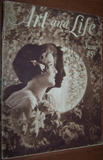  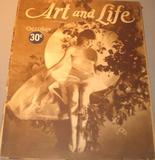  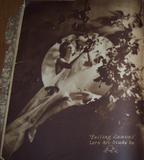     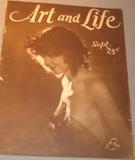  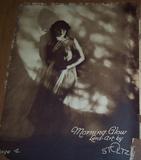 [ mod edit - dead link(s) removed] Last edited by Wendigo; April 29th, 2016 at 07:17 AM.. Reason: removed dead links |
|
|

|
|
|
#28 |
|
Vintage Member
Join Date: Jan 2008
Location: Kyiv
Posts: 578
Thanks: 44
Thanked 17,705 Times in 579 Posts
           |
New York: Arnold Genthe
Time Period: 1911-1940 Location: San Francisco, Manhattan “Arnold Genthe won international fame as a pictorialist who in his portraiture captured the unposed moment of personal expression. He pioneered spontaneous shooting in studio situations. His dance photography remained pictorial in its envelope of shadow, mist, and mystery, but were shot with the highest speed shutters and films available to capture the instant of gesture. He preferred to shoot dancers improvising works rather than performing choreography. Absolutely convinced of the aesthetic rightness of his work, he would prohibit cropping and editorial intervention in the publication of his images. His theatrical portraiture swathed sitters in mystique, sometimes at the expense of accurate depiction of features. He preferred not to portray moments of passionate expression, rather contemplative poses by solitary figures.” © David S. Shields http://broadway.cas.sc.edu/index.php...ographer&id=53 Alta Rush, ,Audrey Munson, Billie Burke, Daisy Irving, Dorothy Knapp, Eleanor Boardman, Ethel Barrymore, Evan Burrows Fontaine, Florence O'Denishawn (Andrews), Greta Garbo, Helen Green, Helen Jesmer , Helen Menken, Hilda Beyer, Irene Marcellus ,Jane Cowl, Jean Gibson, Julia Marlowe, Katherine Cornell, Kathleen Martyn, Lee Miller, Lina Basquette, Margaret Anglin, Marion Davies, Martha Hedman, Rose Rolando (Rosamonde Cowan), Ruth Chatterton, Ruth Findlay, Ruth St Denis, Theda Bara, Tilly Losch, Valentina Koshuba, Victoria Boshko, Virginia Myers… 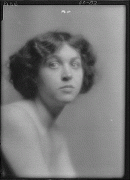  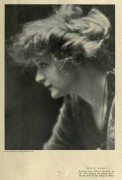  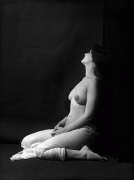  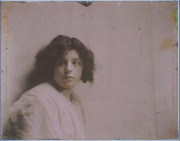   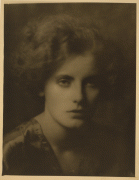 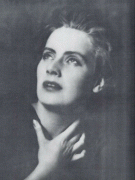 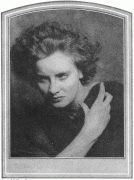  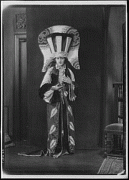  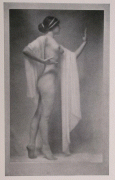 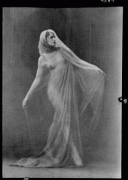  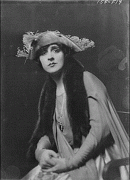  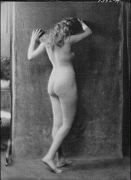  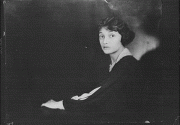 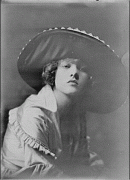 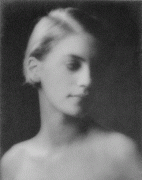   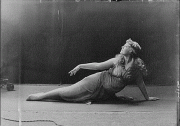    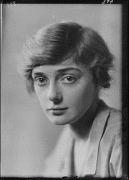 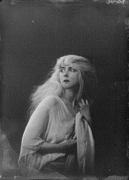 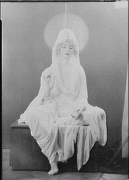 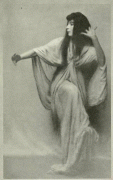 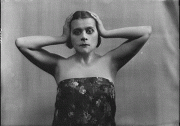 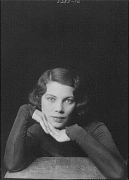  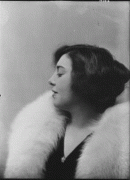 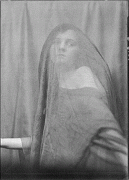 [ mod edit - dead link(s) removed] Last edited by Wendigo; April 29th, 2016 at 07:54 AM.. Reason: removed dead links |
|
|

|
| The Following 25 Users Say Thank You to mrcheese For This Useful Post: |
|
|
#29 |
|
Vintage Member
Join Date: Jan 2008
Location: Kyiv
Posts: 578
Thanks: 44
Thanked 17,705 Times in 579 Posts
           |
Alexander Danilovich Grinberg
Александр (Абрам) Данилович Гринберг Alexander Grinberg Aleksandr Grinberg Alexander Danilovich Grinberg (1885-1979) “is one of the most respected Russian photographers of the twentieth century. Born at the end of the nineteenth century, and having lived ninety-four years, he experienced the Russian revolutionary, the Civil War, two world wars, stalinist repression along with numerous fluctuations in soviet political and cultural history. Even as a child Grinberg demonstrated a strong attraction to photography, taking his first photography at the age of ten. By the age of twenty-two he was an active member of the Russian photographic society, where he became a leading creative force. In 1908 he was awarded the silver medal in the all-Russian photo exhibition in Moscow and the gold medal in the international photo-exhibition in dresden, which signaled the recognition of his talents on an international level. In 1914 Grinberg was invited to work at the Khanzhonkov film studio in Moscow. Becoming the head of the film advertising sections, he quickly established process for mass distribution and here he began his cinematographic career. He went on to work behind the camera for numerous studios. In the 1920'a his cinematographic experience led him to become an instructor at the state technical institute of cinematography where he began his association with Sergey Eisenstein who he photographed. His prestige was on the rise throughout the 1920s until 1929 when, under the storm of the cultural revolution the "old school" of Soviet photography came under fire as "depraved", and Grinberg fell out of favor. The new cultural policy dictated that any eroticism in artistic forms was a remnant of bourgeois idleness, and inappropriate for soviet society. Nevertheless, Grinberg risked one more exhibition of his work in 1935 with images of partially dressed women, raising a storm of criticism, as well as prompting a few brave photographers to come to the defense of this artistic master. Consequently, for his unorthodox vision of photography he was arrested and sentenced to a labor camp for distribution of pornography. By 1939 he was released on early parole, for good behavior and industriousness, although by the time of his release he had permanently lost his sense of smell. He resumed to work as a photographer for a variety of institutions such as museums and taught photography. His early work was not destroyed as would have normally happened because his older brother managed to hide the negatives for many years. During the second world war he worked to preserve and restore rare photo archives. After the war he worked in the house of models, photographing for fashion designers. In the 1950s he photographed various Soviet film starts and scientists. His whole life was thus devoted to photography, which he never abandoned in the most difficult of circumstances.” “The participation of Russian pictorialists in international shows of the 1920’s brought the gold medals to Grinberg, Eryomin, Andreyev and Ulitin, each of whom won several medals. In 1924, Nikolay Svishchyov-Paola’s work brought him the gold medal of the International Exhibition of the Decorative and Industrial Arts in Paris. It was the pictorialists who represented the photographic art of revolutionary Russia in the countries of Europe, the Americas and Asia. During that period, works by Russian pictorialists received special attention not only at pictorial photography shows but also at the international shows that featured works of the most diverse trends. Photo art critics emphasized the perfection of execution and profundity of images in the works of Russian pictorialists. Reviews of Soviet Russia’s photography published in the European photographic press until 1928 mentioned Grinberg, Eryomin, Ulitin and other pictorialists among the leading photographers. The Soviet press, too, treated the participation of pictorialists in exhibitions abroad on behalf of Soviet Russia favorably enough. With time, however, the ideological conception of Soviet art changed towards greater rigidity, and the press, including Soviet FOTO and Proletarian FOTO, started to refer to pictorialism as “bourgeois”, “petty” and “harmful to new proletarian art”. During World War I, many pictorialists, such as Klepikov and Eryomin, fought on the front lines; some, such as Ivanov-Alliluev and Grinberg, served in the Red Army as photographers and cameramen in 1917-1919. After World War I and the Russian Civil War, most photographers returned to their studios, which had been deprivatized at the time of Revolution, and they became hired workers. Some, like Grinberg, continued to work for the movies. Pictorialists went on with their efforts in photographic schools at various levels, ranging from “schools for eradication of photo illiteracy for the Red Army soldiers and workers” to regular photo institutes. The photo institutes, however, were short-lived and closed down after several years of existence. The attendees of photo schools, to whom the pictorialist-teachers imparted their professional and artistic skills, eventually became the “worker-correspondents” who formed the first generation of professional Soviet photo reporters. The mid-1920’s witnessed a peak of creative activity by “representatives of the old culture” or “fellow-travellers” as they were called by the ideologues of Revolutionary proletarian culture. Several outstanding pictorialists worked at Moscow’s film studios as photographers and cameramen. Photographers, artists, theater and film directors and dancers who had matured as creative personalities before the Revolution remained very active, investigating how to record, study and interpret movement at the State Academy of Artistic Sciences. Their achievements in this area were represented at the annual Art of Movement exhibitions. Grinberg, Eryomin and their students were active among the Academy’s photographers. At that time, most of the pictorialists were largely in the 35 to 45-year age bracket, and they were famous both in Moscow and in remote provinces. In 1928 alone, Andreyev, for example, took part in 17 exhibitions. Older associations, such as the Photographic Society and the Photographer magazine continued to exist until 1928, when the term of their charters was due to expire. They received the brunt of ‘proletarian criticism’ only in the last months of their existence. Following the dissolution of the pictorialist associations in the late 1920’s, the artists continued as an informal group to take part in discussions on the future of photography until 1935, the year of the Masters of Soviet Photography exhibition. Pictorial photographers, the luminaries of the ‘old school’, tried to adapt themselves to the new social and cultural reality, applying their artistic and technical skills to architectural, theater and applied photography. In 1932, for instance, Grinberg and Eryomin executed a photo enlargement 25 meters high, commissioned by the state to decorate Moscow for the 1st of May Worker’s Solidarity march. The 1935 Masters of Soviet Photography exhibition, where works were awarded certificates of merit, marked the beginning of the end for Russian pictorialism. A review of the exhibition placed in the Soviet FOTO magazine mentioned the unquestionable mastery and high professional skills of the pictorialists, then without naming names, proceeded to criticize them for their “admiration for pre-revolutionary culture of the estates of the gentry and architecture of old Moscow”, referring to works by Eryomin, Klepikov, Svishchyov-Paola and Grinberg; “depiction of useless scenes of rural life in the period of socialist restructuring of agriculture,” targeting works by Andreyev, Ulitin and Shokin; “nude models the working class has no need for,” aiming at works by Grinberg and Eryomin. Soon after, Grinberg was tried for the criminal offense, “propaganda of pornography.” Ulitin went on political trial for calumny of Soviet power. These artists, the former leaders of the pictorialists during the 1920’s and 30’s, were sentenced to years of hard labor and exile. Other pictorialists, while still enjoying their freedom, became wary of voicing the artistic convictions they all shared. In the meantime, exhibiting at home and abroad became increasingly difficult. Pictorialism seemed to be sinking into oblivion.” © Evgeny Berezner and Irina Tchmyreva for the exhibition Russian Pictorialism, 2002 Alisa Koonen Antique Motive, 1923 Asya Zagorskaya Bacchanalia, 1923 Dynamo Troupe, 1924 Ekaterina Lopatina (Katja) Galya, ca 1920 Margarita Barskaya Chardynina Maria Peschanaya Nataliya Grinberg Nina Frolova Nina Vasilyeva Olga Tretyakova Sergei Eisenstein Silviya Chen Study of Movement, 1925-28 Tamara Lavrova Vera Kholodnaya Zina Kal'menkova  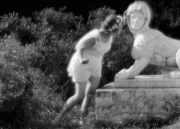 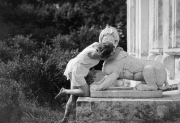 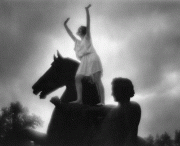   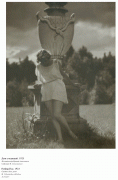 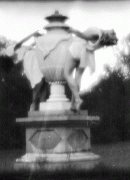 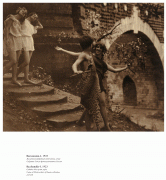 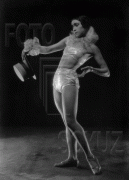 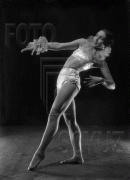 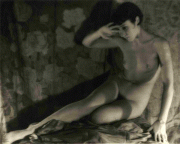  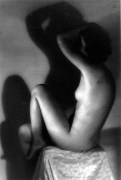 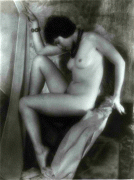   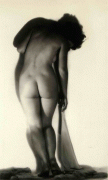  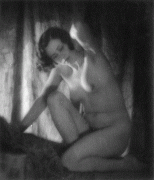 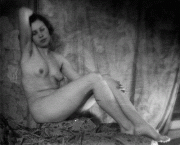 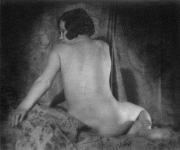  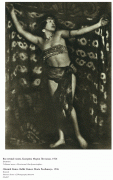  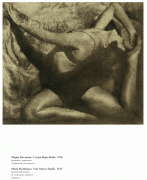 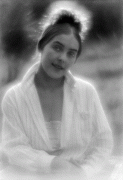 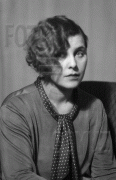 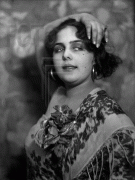  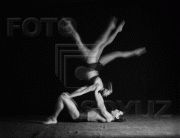 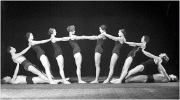   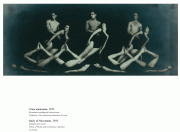 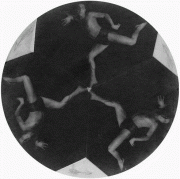  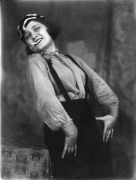 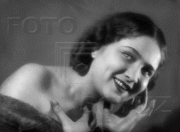  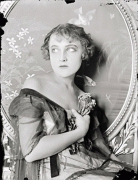  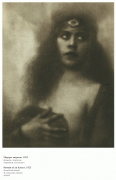  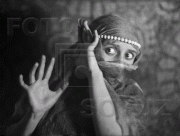  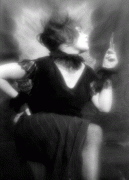  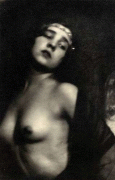 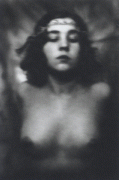 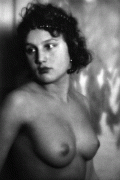 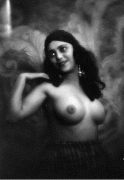 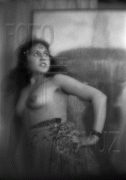 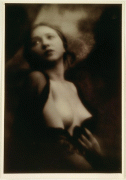 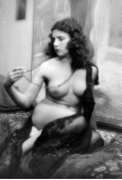   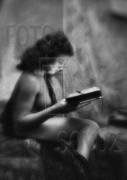  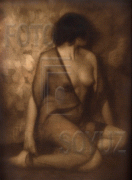 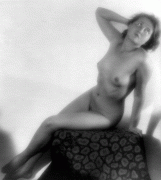   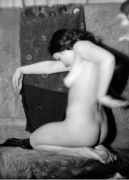 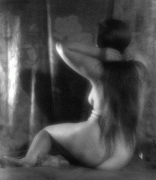 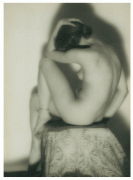 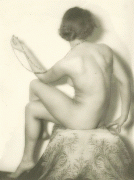 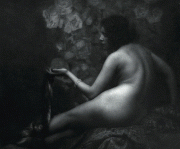 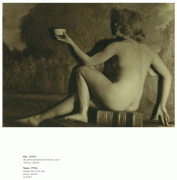 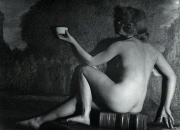 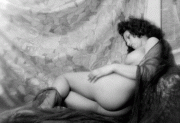 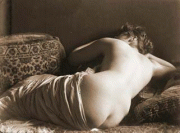 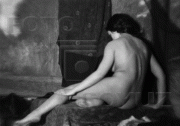    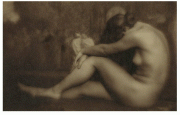 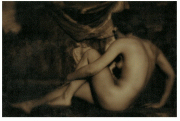  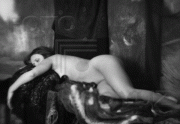 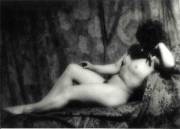  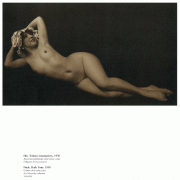  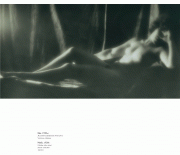 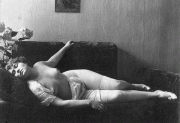 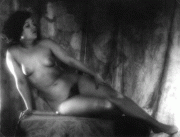 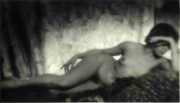     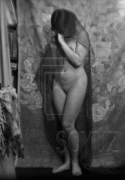 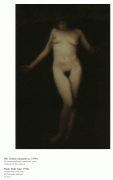  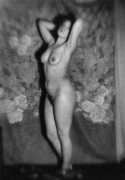 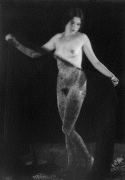      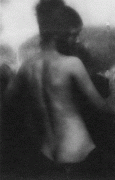 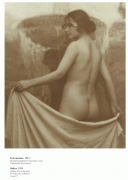 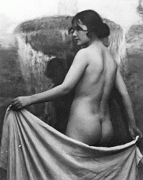   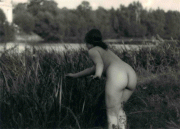  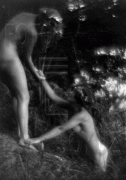 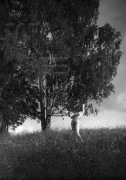 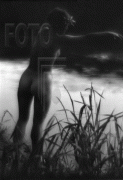 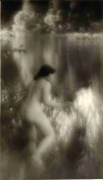 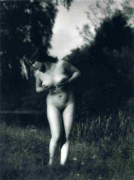 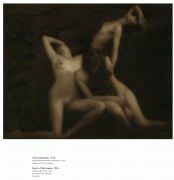 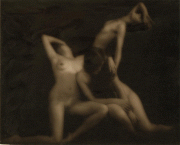     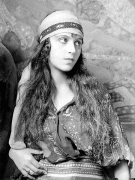 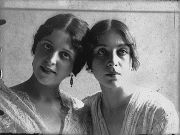 [ mod edit - dead link(s) removed] Last edited by Wendigo; April 29th, 2016 at 07:57 AM.. Reason: removed dead link |
|
|

|
| The Following 33 Users Say Thank You to mrcheese For This Useful Post: | aldoublez, audia2, bigbellyboy73, bluemax0, boggis, browser1, bustero, daddyo7, dirkje, excepteuropa1, fraet, geoffe, gubaman52, Hornblower, johnbear, jomama, jron, kramer820, lordoctorr, Meini Again, mercman, napo, Paul-1485, phap, Pipemaster, signal, SovietUnionBoy, Spargel, the pope, The Wolf Man, tsunamiSD, Turbomax, zimbim |
|
|
#30 |
|
Junior Member
Join Date: Sep 2010
Location: American Southwest
Posts: 7
Thanks: 9
Thanked 362 Times in 6 Posts
           |
Auguste Belloc
1800-1867 French artist and photographer 1800 born in Paris 1829 His early work consisted in miniatures and watercolors but he soon was to discover photography 1845 he became enthused by the discovery of the wet-plate collodion process 1851 Belloc had his own studio at boulevard Montmartre 5, and already had taken to specializing in portraiture and nudes 1852 he collaborated with the painter and photographer Alexandra Clausel, who had come up with a lacquer for his oil paintings. Together they perfected a wax coating process for the purposes of conferring a certain luster to images on salted paper 1853 Belloc brought out, at author's expense, his first book on photography: "A Theoretical and Practical Treatise on Collodion-Process Photography". The following year he set up a photographic printing press and became a founding member of the "Societé Francaise de Photographie". 1867 he died Belloc got into quite a bit of trouble for his "pornographic" pictures. There is a new and pricey book out there about his troubles and showing the photos that so outraged the academics (not the people) of France. It is difficult to imagine the uproar, yet the images below of overtly displayed genetalia and... Oh, mon Dieu! there is a woman, her vagin showing, in bed, holding Pierre's coq! Incroyable!!! Feel free to feel jaded...   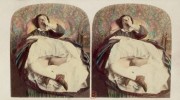  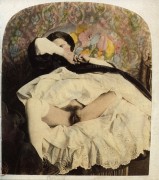 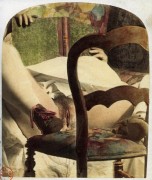 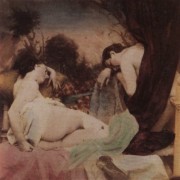 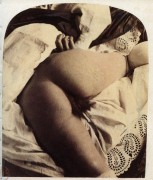 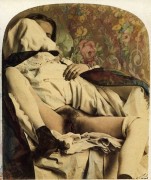 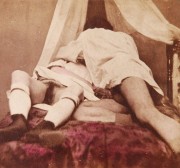  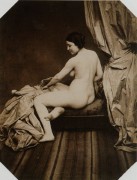 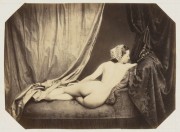  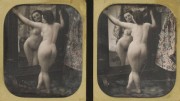  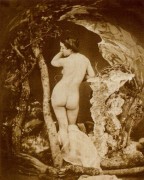 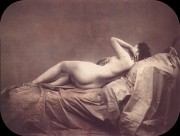   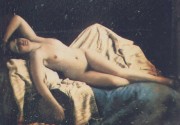  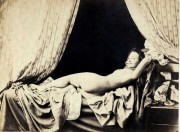
__________________
To view links or images in signatures your post count must be 0 or greater. You currently have 0 posts. Once more unto the breach, dear friends... Last edited by retrosexual; September 18th, 2010 at 01:52 AM.. Reason: formating paragraphs |
|
|

|
| The Following 40 Users Say Thank You to retrosexual For This Useful Post: | attila, BET, bigbellyboy73, bluemax0, browser1, bustero, Gizmodog, gubaman52, j1toolman2001, jennydreadful, johnbear, johnmikita, jomama, kego29, kelio, lautreamont, lordoctorr, Lotreamon, mchl13, Meini Again, mercman, mjefferys1, Monroe, napo, orangeblade55, over65, Paul-1485, phap, Pipemaster, PWRmad, Roadrunner13, Sam Spade, sarac, SovietUnionBoy, Spargel, the pope, The Wolf Man, tsunamiSD, zeeman, zimbim |
 |
| Thread Tools | |
| Display Modes | |
|
|